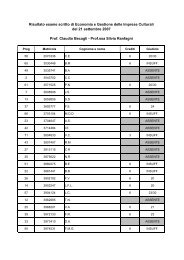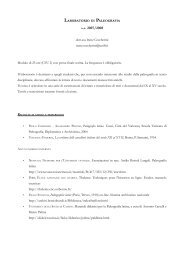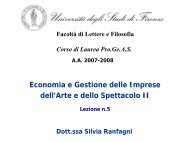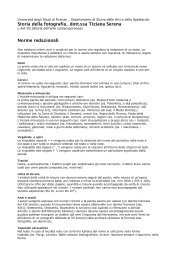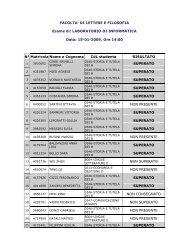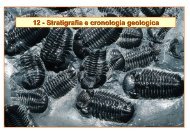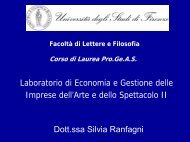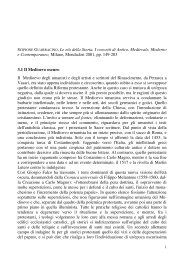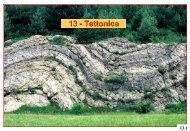Beyond Pragmatics. Morphosyntactic Development in Autism.pdf
Beyond Pragmatics. Morphosyntactic Development in Autism.pdf
Beyond Pragmatics. Morphosyntactic Development in Autism.pdf
Create successful ePaper yourself
Turn your PDF publications into a flip-book with our unique Google optimized e-Paper software.
J <strong>Autism</strong> Dev Disord<br />
with short-term phonological memory capacity. It is<br />
possible that the strong lexical skills seen <strong>in</strong> the autism<br />
group <strong>in</strong> the present study may be tied to the relative<br />
strengths <strong>in</strong> short-term memory ability characteristic of<br />
the disorder (Bennetto, Penn<strong>in</strong>gton, & Rogers, 1996;<br />
Eigsti & Bennetto, 2001; Hermel<strong>in</strong> & O’Connor, 1975).<br />
In the course of learn<strong>in</strong>g to talk, children are likely<br />
to omit required grammatical elements and to make<br />
grammatical errors. Sometimes these errors are seen as<br />
evidence of underly<strong>in</strong>g syntactic knowledge (e.g., the<br />
presence of past tense overregularization errors like<br />
‘‘wented’’ suggests that a child has learned the general<br />
form of the past tense). Children <strong>in</strong> the autism group<br />
were not more likely to make errors, while children <strong>in</strong><br />
the DD group made significantly more errors of<br />
omission (not <strong>in</strong>cluded or scored <strong>in</strong> the IPSyn). Interest<strong>in</strong>gly,<br />
this conflicts with a previous report, that<br />
children with autism were more likely to omit such<br />
morphemes (Bartolucci et al., 1980), a discrepancy that<br />
may lie <strong>in</strong> the disparate ages of children studied. Errors<br />
(which were similar <strong>in</strong> frequency to those observed <strong>in</strong><br />
studies of typical language acquisition; e.g., Marcus<br />
et al., 1992; Rub<strong>in</strong>o & P<strong>in</strong>e, 1998) are thus not the<br />
source of group differences <strong>in</strong> morphosyntactic abilities.<br />
Clearly, then, the syntactic deficits found here<br />
were not due to language that was more error-prone, as<br />
children with autism were no more likely to omit<br />
required particles, to fail to <strong>in</strong>vert phrase orders, or to<br />
produce <strong>in</strong>correct structures or orders.<br />
One possible explanation for syntactically less<br />
complex language is that children with autism could be<br />
produc<strong>in</strong>g many more neologisms or ‘‘jargon words,’’<br />
as has been described <strong>in</strong> the literature. For example,<br />
children could be say<strong>in</strong>g nonsense words <strong>in</strong> place of a<br />
variety of morphosyntactic elements, and <strong>in</strong> this way<br />
achiev<strong>in</strong>g lower scores on the IPSyn. Results <strong>in</strong>dicated<br />
that children with autism did produce significantly<br />
more jargon than children <strong>in</strong> the DD and TD groups<br />
(a mean of 5 compared to a mean of 1.3 and 0.3,<br />
respectively) and that the amount of jargon was negatively<br />
correlated with syntactic abilities (IPSyn score).<br />
However, jargon production was also correlated with<br />
cognitive abilities (non-verbal IQ). While the presence<br />
of jargon or neologisms <strong>in</strong> the speech of children with<br />
autism confirms previous f<strong>in</strong>d<strong>in</strong>gs, it alone cannot<br />
account for syntactic deficits.<br />
There is a second explanation that could partially<br />
account for the present syntactic impairments. Children<br />
are <strong>in</strong>creas<strong>in</strong>gly likely to talk about th<strong>in</strong>gs that are<br />
spatially and temporally removed as they grow <strong>in</strong> language<br />
skill and cognitive skill; more complex referential<br />
discourse entails more complex syntax. While this<br />
cross-sectional dataset can not determ<strong>in</strong>e causality <strong>in</strong><br />
this chicken-and-egg problem, the children with autism<br />
as a group made significantly fewer mentions of nonpresent<br />
events and objects, and furthermore, those<br />
mentions were correlated with IPSyn score and jargon<br />
productions (i.e., language measures) but not with nonverbal<br />
IQ. The fact that children across groups were<br />
matched on non-verbal cognitive ability argues aga<strong>in</strong>st<br />
the hypothesis that syntactic complexity was limited by<br />
cognitive process<strong>in</strong>g of events. However, the data raise<br />
the possibility that the children with autism scored<br />
lower on the IPSyn because they were talk<strong>in</strong>g about<br />
less complex events, or (conversely) that their syntactic<br />
limitations prevented the discussion of such topics.<br />
<strong>Pragmatics</strong> and discourse aspects of language provide<br />
the most frequently-discussed aspect of language<br />
deficits <strong>in</strong> autism (Baltaxe & D’Angiola, 1997; Kelley<br />
et al., 2006; Ozonoff & Miller, 1996; Shriberg et al.,<br />
2001; Tager-Flusberg & Anderson, 1991). Interest<strong>in</strong>gly,<br />
the present results <strong>in</strong>dicated that children with autism<br />
produced as many of the conversation-support<strong>in</strong>g turns<br />
as children <strong>in</strong> comparison groups, suggest<strong>in</strong>g that there<br />
were no specific impairments <strong>in</strong> the ability to <strong>in</strong>itiate<br />
new topics, to reply to an <strong>in</strong>terlocutor’s comments or<br />
questions, or to expand upon one’s own utterances, for<br />
children at this verbal level. However, as expected,<br />
children with autism were significantly more likely to<br />
produce utterances that did not contribute to the discourse—they<br />
were less able to participate <strong>in</strong> the ‘‘to<br />
and fro’’ of conversation. Specifically, they were more<br />
likely to echo their own or their <strong>in</strong>terlocutor’s utterances;<br />
they were more likely to ignore or fail to<br />
respond to a direct query; and they were more likely to<br />
produce utterances whose discourse features were<br />
uncategorizable. This latter category <strong>in</strong>cluded <strong>in</strong>telligible<br />
but un<strong>in</strong>terpretable utterances (e.g., jargon).<br />
Thus, the conversation of children <strong>in</strong> the autism group<br />
was typical <strong>in</strong> many respects, but conta<strong>in</strong>ed additional<br />
atypical elements. This f<strong>in</strong>d<strong>in</strong>g is consistent with previous<br />
research on discourse structure <strong>in</strong> children with<br />
autism at roughly the same developmental level<br />
(Tager-Flusberg & Anderson, 1991). While address<strong>in</strong>g<br />
the question goes beyond the scope of the present<br />
paper, this f<strong>in</strong>d<strong>in</strong>g raises an <strong>in</strong>terest<strong>in</strong>g issue for future<br />
research, of whether these ‘‘discourse-<strong>in</strong>terrupt<strong>in</strong>g’’<br />
utterances occurred more frequently <strong>in</strong> particular discourse<br />
contexts.<br />
An important counterpart to the analysis of children’s<br />
discourse is to ask whether the adults across the<br />
three groups <strong>in</strong>teracted differently with children across<br />
groups. As discussed <strong>in</strong> the Methods, play partners<br />
consisted of the first author or one of several tra<strong>in</strong>ed<br />
research assistants, all of whom followed a relatively<br />
standard set of guidel<strong>in</strong>es on how to respond and<br />
123



![PATROLOGIA GRECA E LATINA [Patrologiae cursus completus]. All ...](https://img.yumpu.com/50711133/1/184x260/patrologia-greca-e-latina-patrologiae-cursus-completus-all-.jpg?quality=85)
